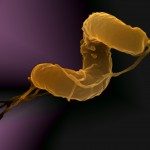Link to Pubmed [PMID] – 33123147
Link to DOI – 10.3389/fimmu.2020.571816
Front Immunol 2020 ; 11(): 571816
The spirochetal bacteria Leptospira spp. are causative agents of leptospirosis, a globally neglected and reemerging zoonotic disease. Infection with these pathogens may lead to an acute and potentially fatal disease but also to chronic asymptomatic renal colonization. Both forms of disease demonstrate the ability of leptospires to evade the immune response of their hosts. In this review, we aim first to recapitulate the knowledge and explore the controversial data about the opsonization, recognition, intracellular survival, and killing of leptospires by scavenger cells, including platelets, neutrophils, macrophages, and dendritic cells. Second, we will summarize the known specificities of the recognition or escape of leptospire components (the so-called microbial-associated molecular patterns; MAMPs) by the pattern recognition receptors (PRRs) of the Toll-like and NOD-like families. These PRRs are expressed by phagocytes, and their stimulation by MAMPs triggers pro-inflammatory cytokine and chemokine production and bactericidal responses, such as antimicrobial peptide secretion and reactive oxygen species production. Finally, we will highlight recent studies suggesting that boosting or restoring phagocytic functions by treatments using agonists of the Toll-like or NOD receptors represents a novel prophylactic strategy and describe other potential therapeutic or vaccine strategies to combat leptospirosis.

